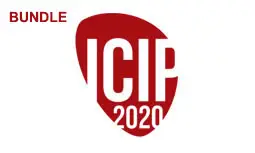-
Members: FreeSPS
IEEE Members: $11.00
Non-members: $15.00Length: 10:52
28 Oct 2020
Due to the lack of contextual information and the difficulty to directly learn the distribution of a complete image, existing image inpainting methods always use a two-stages approach to make plausible prediction for missing pixels in a coarse-to-fine manner. In this paper, we propose a novel inpainting method with two parallel pipelines. The first pipeline is a standard image completion path that takes the corrupted image as input and outputs the predicted complete image. The second pipeline exists only during the training phase that inputs a complementary image of the corrupted one and still outputs the same complete image. The two pipelines operate simultaneously, and they share identical encoder and most parameters in the decoder. Furthermore, inspired by VAE, random Gaussian noise are added to the features not only to improve the robustness of the model but also to enable generating diverse and plausible results. We evaluated our model on several public datasets and demonstrated that the proposed method outperforms several state-of-the-arts approaches.



